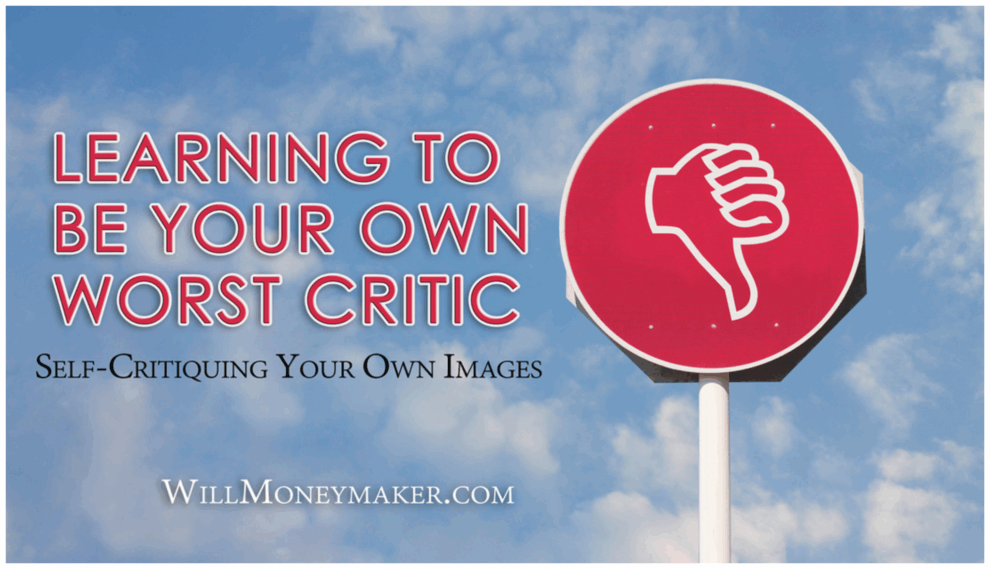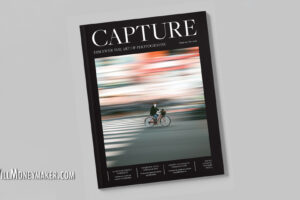Finding someone to critique your work well is sometimes even harder than creating the work in the first place. If you’re like most people, you can’t rely on friends and family for unbiased critiques. They care for you and therefore believe that everything you create is wonderful. If you have photographer friends, they may be too polite to say anything harsh or to really pick your images apart.
That means that if you want real, honest and useful feedback on your work, you need to do it yourself. Self-critique is one of the most challenging skills for any photographer to learn, but I firmly believe that it is one of the most useful skills you could possibly have.
Looking at Your Work with Fresh Eyes
To critique your own work, you first need to develop a system for looking at your work from a fresh perspective. I usually find that the best way to do this is to simply walk away from the computer. Leave your images alone for a day, a week or however long it takes for you to forget some of the finer details of the image. Once you’ve “slept on it,” so to speak, some of the luster will have worn away and you’ll be able to look at your images with a much more objective eye.
Printing your images, or having a professional print them, is another great way to look at your images from a different perspective. We are all so used to seeing our photos on a digital screen that, when presented with prints of our images, the difference is sometimes jarring. You’ll find that the printed photos often have more nuanced colors and a higher dynamic range. Sometimes even the texture of the photo paper adds its own character to your image.
Evaluating the Technical Aspects
With your fresh new perspective, the first thing to look at is the technical quality of your image. Ask yourself several questions:
- Is the focus spot-on or slightly off?
- Can you see detail in the shadows and highlights?
- Does your image have an “over-processed” look?
- Are horizon lines or upright objects straight or slanted?
There are many more questions you can ask, but these give you an idea of the technical flaws you need to look for. However, keep in mind that not all technical flaws are grounds for deleting an image! Sometimes a missed focus or stark blacks and bright whites are used to great artistic effect.
Looking at the Artistic Quality of Your Image
The next step is to look at the artistic quality of your image. Did you follow the Rule of Thirds or was there a good reason to place your subject in the exact center of your image? Check for elements that distract from the overall geometry of the image. Are there objects in the frame that you wouldn’t miss if they weren’t there? During this portion of your critique, analyze all the details in your image and decide whether they add to or take away from the finished work.
The Emotional Impact
Once you’ve judged your image for technical and artistic quality, the final step is to evaluate the photo’s emotional impact. First, ask yourself: Will other people find something of emotional value in this image? For instance, a photo of your husband or wife will always be meaningful to you. To a complete stranger, however, the image may have little or no meaning.
 Another way to create emotion is to tell a story with your images. A photo of someone riding a horse will have more of an emotional impact than a horse just standing and looking at the camera. That is because the action in the first image will invite your audience to examine your image to learn more. Why is the person riding the horse? Where are they going?
Another way to create emotion is to tell a story with your images. A photo of someone riding a horse will have more of an emotional impact than a horse just standing and looking at the camera. That is because the action in the first image will invite your audience to examine your image to learn more. Why is the person riding the horse? Where are they going?
There is also a third point to consider: Sometimes photos are created, not for emotional impact, but for beauty’s sake alone. If that is the case, then make a list of the elements that make your image beautiful. The longer your list is, the more likely it is that someone else will find your image beautiful, too.
If you’ve studied the works of many famous photographers, you’ve probably seen several images that you didn’t particularly like for one reason or another. That is because art is a very subjective thing, and that subjectivity is what makes self-critique such a difficult skill to learn. Check your work against every technical, artistic and emotional guideline you know, but remember that it is perfectly acceptable to break the rules when there is a good reason.






